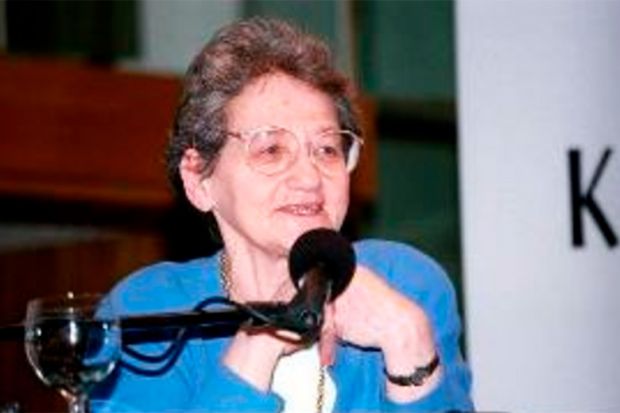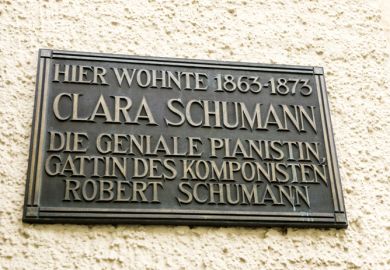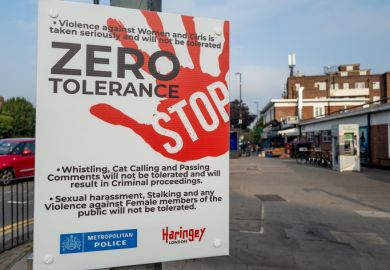As a biophysicist and cultural omnivore, I’m always looking for ways to combine arts and sciences.
To this end, I gave a talk at the UK’s National Portrait Gallery (NPG) earlier this month (ahead of International Women’s Day on 8 March), discussing the lives and work of the five female structural biologists in the NPG collection – all X-ray crystallographers.
I mention this latter fact ruefully, because my own predominant structural biology technique is nuclear magnetic resonance (NMR) spectroscopy, although, in keeping with the theme of this piece, I dabble in a variety of techniques and often use a combination of complementary methods to answer a particular biological question underlying health or disease.
The best known of my NPG cohort is probably Rosalind Franklin. The others are Dorothy Hodgkin (who remains the only British female scientist ever to have won a Nobel prize), Kathleen Lonsdale, Louise Johnson and Olga Kennard, the only surviving representative. I had no idea of the state of her health, but tried contacting her via the Royal Society, of which she has been a fellow since 1987, and I was delighted to receive an invitation to visit her in Cambridge.
At almost 93, she lives independently with her husband Sir Arnold Burgen, also a distinguished scientist, who is 95.
I arrived at her distinctive single-storey home on a sunny, snowy day in January. She has lived there since 1962; the house was designed for her by the Danish architect Erik Sørensen and is now a grade II listed building. It turns out that Kennard is an architecture aficionado, and she took great pride in showing me brochures of the architectural plans and photographs of two Cambridge buildings in whose design she has been heavily involved.
One is her synagogue, Beth Shalom, which began in members’ living rooms and rented accommodation before acquiring the derelict site of an abandoned club for former Japanese prisoners of war. In 2015, the community finally moved in to their stylish purpose-built centre designed by Cowper Griffith architects.
The other is home to the Cambridge Crystallographic Data Centre (CCDC), the database that exemplifies Kennard’s career and legacy to the structural biology community. Also designed by Sørensen, some 30 years after the Kennard homestead, it won the Sunday Times/Royal Fine Arts Society Building of the Year Award in 1993.
As well as being a founding crystallographer, Kennard pioneered the idea of collating and storing structural data for the use of others. Revolutionary at the time, such measures have now become standard prerequisites for the data management plans that support all of our grant applications.
The CCDC supports a database for small molecule structures, but it also gave birth to the idea of the Protein Data Bank (PDB), which is close to my heart, not only because I have deposited many solved structures in there, but also because it truly appreciates the aesthetics of macromolecular detail and promotes them through collaborations with artists.
Kennard says that there is nothing about her career that she regrets or would have done differently, although she admits that it was challenging commuting to the National Institute for Medical Research in London in the 1960s as a divorced single mother of two small girls. At one time, she employed two au pairs, and she was greatly relieved when, in 1961, she got her first job close to home, in Cambridge, which she suspects was aided by the intervention of her friend and colleague Dorothy Hodgkin.
In a pioneering move, supported by the Nobel laureate Lord Todd, Kennard brought crystallography to the Cambridge Chemical Laboratories, applying her novel skills to the study of complex “small” molecules. One of her most notable achievements was solving the structure of adenosine triphosphate (ATP), the vital chemical that provides all the energy requirements of our bodies.
She also solved many important drugs including antibiotics and steroids, shedding light on their mechanisms of action. At the later end of her career, Kennard worked on crystallising pieces of DNA and, in the mid-1980s, she was the first to solve double-stranded DNA fragments containing mismatched base pairing, which she published in several high-profile Nature papers.
Kennard was adamant that she has always been treated as an equal by men in the crystallography community and has never experienced sexism in that context. This seems astounding to me, but also offers hope for the future in these uncertain times.
After her retirement at the age of 74, Kennard served two consecutive four-year terms as trustee of the British Museum, a joyful and lively role that she found rewarding with Neil McGregor as director. Even since retiring from this additional role, Kennard has remained highly active; in 2015, she delivered the opening address at the 50th anniversary event for the CCDC.
Kennard showed me lots of wonderful crystallography memorabilia, including a menu from an event celebrating Hodgkin’s 80th birthday in Oxford that was signed by the great and the good of crystallography. How I would have loved to have been a fly on the “Grand Marnier soufflé”. She also usefully told me humorous anecdotes about each of my NPG subjects.
Why there are so many heroines of crystallography has been discussed at length. Kennard believes that women have a way with patterns, which could serve as a generous explanation of why there are far fewer historical heroines of NMR spectroscopy.
Speculations welcome in the comments…
Rivka Isaacson is a senior lecturer in chemical biology at King’s College London.
POSTSCRIPT:
Print headline: Portrait of a pioneering female scientist: Olga Kennard
Register to continue
Why register?
- Registration is free and only takes a moment
- Once registered, you can read 3 articles a month
- Sign up for our newsletter
Subscribe
Or subscribe for unlimited access to:
- Unlimited access to news, views, insights & reviews
- Digital editions
- Digital access to THE’s university and college rankings analysis
Already registered or a current subscriber?







